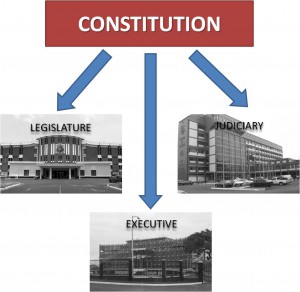The Liberian government is modeled after that of the United States as the nation was established by freed slaves from the US. There are three coordinate branches of government and they are the Legislative, Executive and Judiciary. The bicameral Legislature consists of two houses which are the Senate and the House of Representatives. The Executive branch comprises the President, Vice President and the Cabinet. The Judiciary includes a Supreme Court and other lesser courts in the nation. As defined by the constitution, these are equal branches working together to govern and uphold the laws of the nation and ensuring a balance of power.
The Legislative branch creates the laws, the Executive branch implements the laws, and the Judiciary interprets the laws. In this representative democracy, the leaders are elected by eligible citizens and these lawmakers should be accountable to the electorate.
The Liberian government has numerous autonomous agencies, cabinet ministries and public corporations that are accountable to the executive branch. From 1848 to the current administration, the government has grown for better representation of the electorate and efficiency in its functions.
Sources
Guannu, Joseph Saye. A Short History of the First Liberian Republic. 1st ed. Pompano Beach, FL: Exposition Press of Florida, 1985. Print.
Guannu, Joseph Saye. Liberian Civics. Monrovia: Herald Publishing, 2004. Print.
Liebenow, J. Liberia : the Quest for Democracy. Bloomington: Indiana University Press, 1987. Print.
Views: 1853
